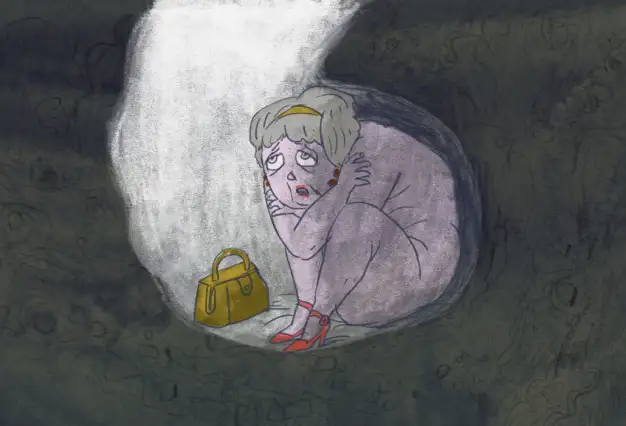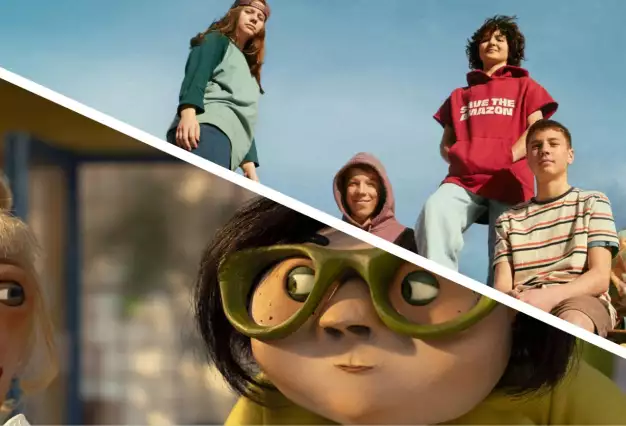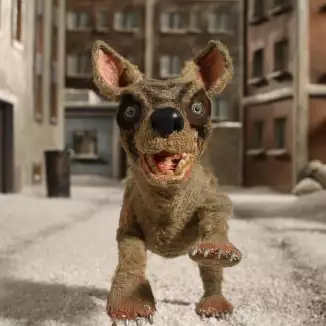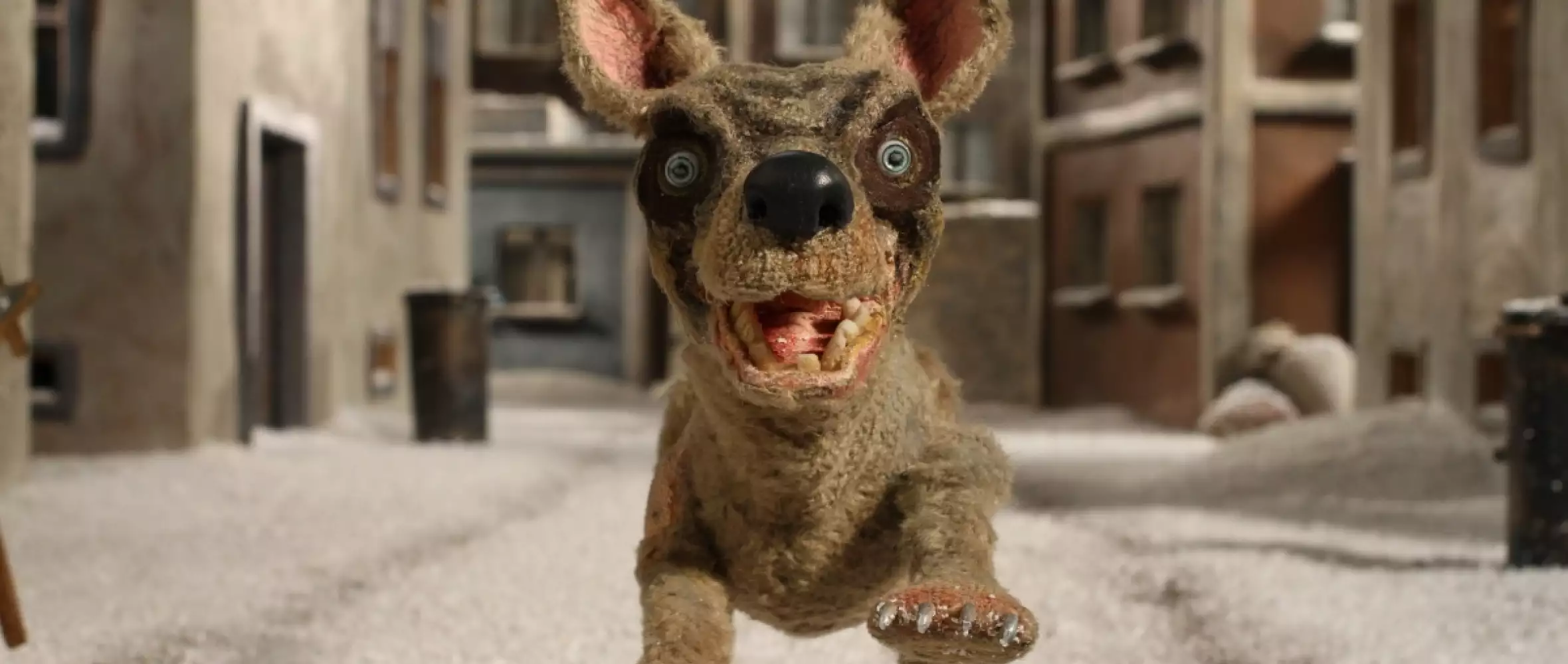
31 October 2017
Laika: A Film With a Long History and a Promising Future
Laika: A Film With a Long History and a Promising Future

Laika is a feature-length stereoscopic puppet film about the first dog in space, produced by experienced Czech animator Aurel Klimt. The premiere is slated for release November 2, 2017, one day before the 60th anniversary of Laika’s fatal cosmic flight.
Article by Kamila Boháčková for Czech Film Magazine / Fall 2017
The Czech Republic has upped its output of puppet films in recent years, in every genre: shorts, student films, features, and TV series. Most of them build on the storied tradition of Czech puppetry, but several have shown an ambition to branch out in a new direction. Radek Beran’s feature-length The Little Man (2015) brought the aesthetics of puppet theater into Czech film, showing clearly the puppets’ strings and wires, while Jan Balej, in Little From the Fish Shop (2015), combined puppets with digital animation. First Snow (2015), a student film by Lenka Ivančíková, introduced animal puppets, and Deep in Moss (2015), by Filip Pošivač and Barbora Valecká, which started life as a short film before being reborn as an online TV series at Stream.cz, featured fantastical forest creatures. The Christmas Ballad (2016), a puppet short by Michal Žabka, with a screenplay by the late great of Czech puppet animation, Břetislav Pojar, was an attempt at animated sci-fi.
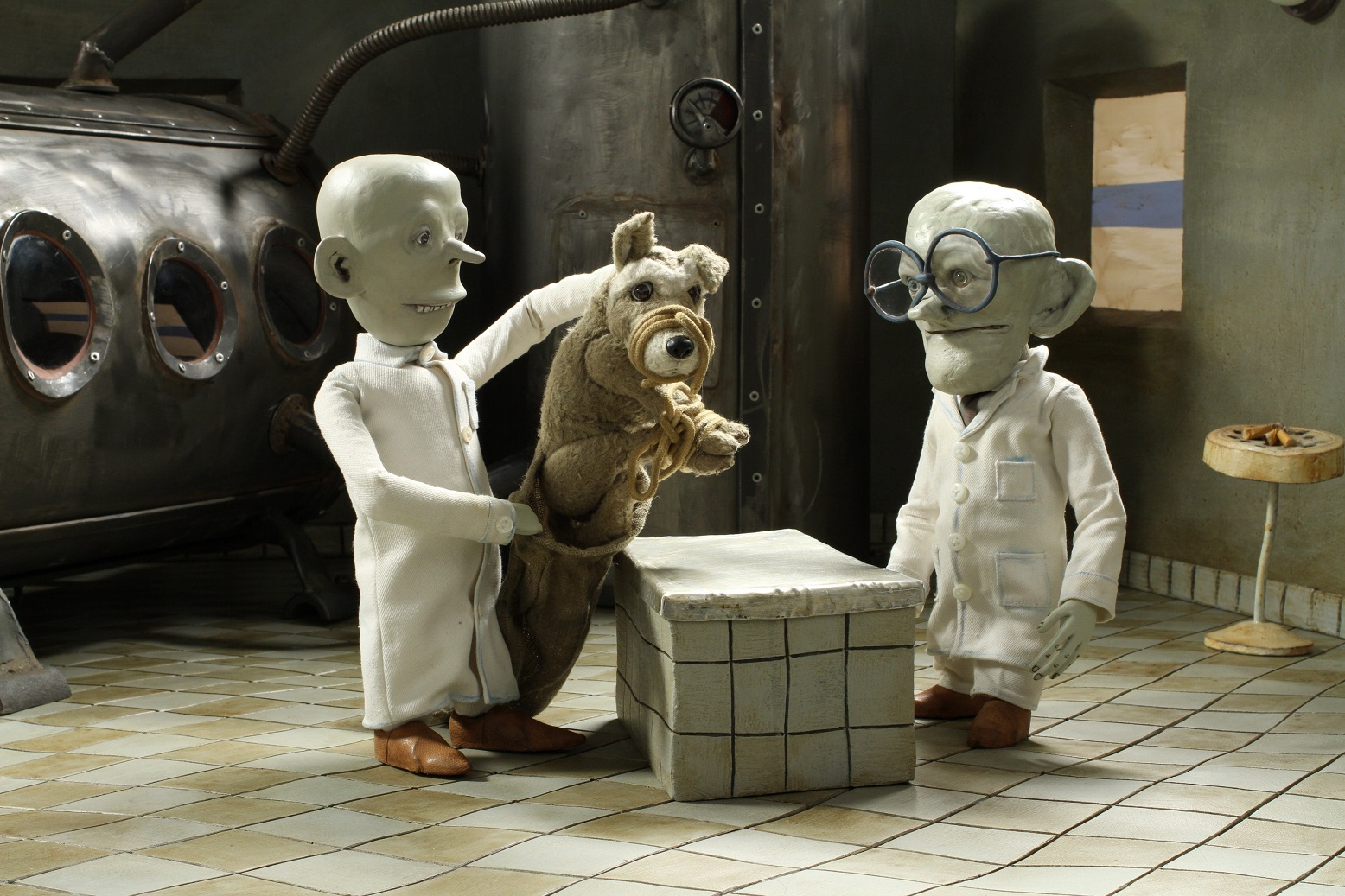 Now, Aurel Klimt’s Laika, currently in production, is also science fiction, but in musical theater style. It tells the hard-knock story of Kudryavka, a street dog on the outskirts of a Russian megalopolis who is caught and forced to become a pioneer of space travel, changing her name to Laika. In the wake of Laika’s launch, other animals are also shot into space, not only from Russia but also from the United States. The animals wander around the cosmos before settling happily on a distant planet where they befriend the local life-forms. After a short time, however, they are joined by Russian astronaut Yuri Leftkin, followed, in true Cold War spirit, by his American rival, Neil Knockout. Suddenly the animals’ harmonious lifestyle is in jeopardy.
Now, Aurel Klimt’s Laika, currently in production, is also science fiction, but in musical theater style. It tells the hard-knock story of Kudryavka, a street dog on the outskirts of a Russian megalopolis who is caught and forced to become a pioneer of space travel, changing her name to Laika. In the wake of Laika’s launch, other animals are also shot into space, not only from Russia but also from the United States. The animals wander around the cosmos before settling happily on a distant planet where they befriend the local life-forms. After a short time, however, they are joined by Russian astronaut Yuri Leftkin, followed, in true Cold War spirit, by his American rival, Neil Knockout. Suddenly the animals’ harmonious lifestyle is in jeopardy.
“I find it fascinating how humans put themselves above other living creatures on Earth, how they decide whether or not they have the right to exist, and how haughtily they treat them, especially in the name of science. I think it’s a big topic, and a perfect fit for an animated film,” says Klimt, the movie’s art director, screenwriter, editor, director, and producer all rolled into one.
The film’s first half-hour is based on actual events from the life of Laika, who was shot into space on November 3, 1957, but the remaining 60 minutes are pure fiction. When Klimt first began considering the topic, in the 1990s, information from the archive of the Russian space program was just starting to be released. During the Cold War, all the public knew was the official propaganda about the peppy little doggy. Little did they suspect that the unwilling first astronaut died after just a few hours in orbit, from stress and overheating, or that she was launched on a hastily prepared Sputnik that was never meant to return to Earth. Nikita Khrushchev, the Russian leader, ordered the flight nevertheless, in the rush to beat the United States with the first living creature in orbit, scoring a propaganda victory. So it was that a street dog became a casualty of the Cold War.
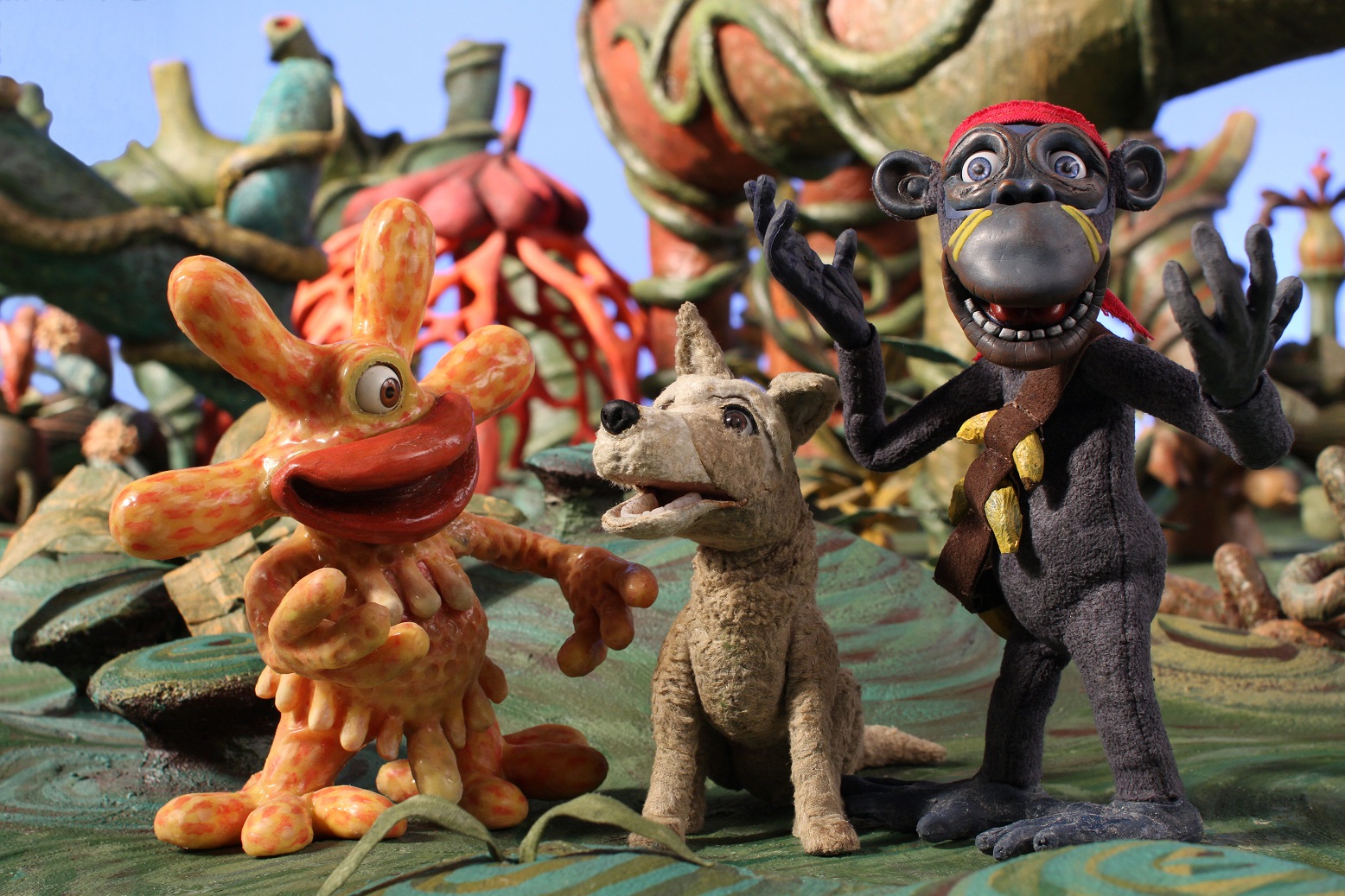 “All this was my main inspiration: the real historical events and the propaganda created around them,” explains Klimt. “I’m fascinated by the absurdity of certain aspects of Russian society and politics.”
“All this was my main inspiration: the real historical events and the propaganda created around them,” explains Klimt. “I’m fascinated by the absurdity of certain aspects of Russian society and politics.”
Klimt’s filmography includes several black comedies inspired by Russian culture, including Mashkin Killed Koshkin (1995) and The Fall (1999), both based on short stories by Daniil Kharms.
From the Stage to the Screen
The idea of making an animated film about the canine cosmonaut had a lengthy evolution. In 2000, Aurel Klimt, together with artist Martin Velíšek and musician Miroslav Wanek, created a puppet theater show called The Enchanted Bell, based on Klimt’s successful short film Of the Enchanted Bell (1998). It was such a success that the theater that produced the show expressed interest in another project by the same team, and the three creators agreed it should be about animals and space. Thus Laika, Qin and Gagarin (2003) was born.
Writing for the theater led Klimt to his central theme, which is the relationship between humans and animals. At the time, he was thinking about a feature-length puppet film with the same story and subject matter. “I saw it as a good opportunity to test the material for a feature-length animated film since the great gift of the theatrical form is direct feedback from the audience,” Klimt explains. “In the film, you only get feedback after the fact, once the work is finished and can’t be changed, whereas the theater is a living organism. You can react to the audience and improve the show — strengthen what works, change what doesn’t.”
Securing funding was a lengthy process. In 2006, Klimt applied for a grant for the screenplay from the Czech Film Fund, and a grant for development from the Media program (now under Creative Europe). Laika, with a budget of 2,231,000 euros (the Czech Film Fund ultimately provided nearly 846,000 euros), is a purely Czech project — a surprising achievement at a time when it is extremely difficult to fund the expensive and lengthy process that a feature-length animation project requires without international coproduction, and not only in the Czech Republic.
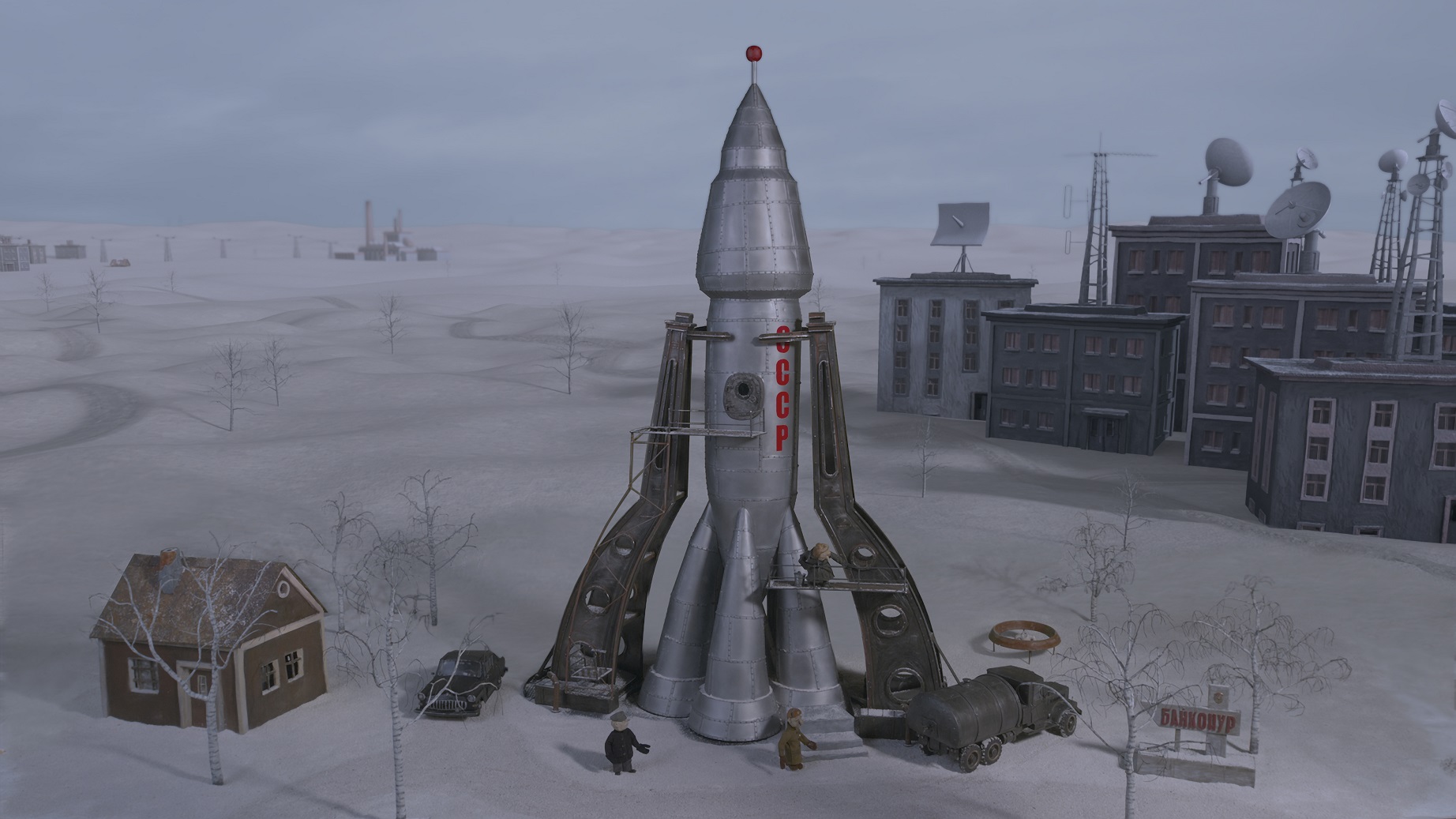 Klimt, who is also acting as producer on the project, originally conceived Laika as a Czech-Slovak production, but says it turned out to be above his production capacities, even though some of the artists involved are Slovak. “It was key that the Czech coproduction partners had their equipment and facilities, which they invested in the project as payment in kind,” he says. “That way, the need for cash was lowered to a minimum.”
Klimt, who is also acting as producer on the project, originally conceived Laika as a Czech-Slovak production, but says it turned out to be above his production capacities, even though some of the artists involved are Slovak. “It was key that the Czech coproduction partners had their equipment and facilities, which they invested in the project as payment in kind,” he says. “That way, the need for cash was lowered to a minimum.”
Thanks to the grants for development, after three years the first technical storyboard was complete. That was followed by drafts by artists František Lipták and Martin Velíšek, then the puppets were created and a pilot produced. Then, Klimt decided to make Laika into a stereoscopic film — that is, a film we perceive (usually using special glasses) in three dimensions.
Adventure of Stereoscopy
There still haven’t been made many stereoscopic animated films made in the Czech Republic. The first one was Fimfarum: The Third Time Lucky 3D (2011), a sequel to the feature films based on the children’s novel Fimfarum, by Jan Werich. In 2010, there was a stereoscopic film recording of the puppet theater performance Harvie on Stage, but it wasn’t produced as a film. Now, however, Harvie (“Hurvínek” in Czech), a children’s favorite in the Czech Republic, will appear in the new stereoscopic animated film Harvie and the Magic Museum, premiering August 31, 2017. Still, it isn’t a puppet film, but a CGI animation.
On the international scene, 3D is very common today, especially in mainstream animation, though it’s generally used only as a gimmick to attract audiences. There are a few exceptions where it’s actually justified, such as the 3D version of Coraline (2008) by Henry Selick, who was one of the first to combine puppet animation with stereoscopy. Klimt, in working on Laika, also chose stereoscopy for artistic reasons, particularly because of the zero-gravity scenes in space. “It’s just very well suited to science fiction,” he says. He spent a year finetuning the stereoscopy and motion control system with his team in order to use it correctly and to its full potential.
Still, Klimt insists the most demanding part wasn’t the stereoscopy, but the handwork: creating the scenography, the decorations, the puppets, and animating the film. Shooting it all on two images instead of one wasn’t that much extra work by comparison. Production itself — creating the props, decorations and puppets, then animation and post-production — began in 2010 and is still ongoing. According to Klimt, along with the extra time required by the stereoscopy, the process was about three times as demanding as his previous films.
Crowdfunding for 3D
Now, after more than 10 years of work, Laika is nearly finished, and Klimt and his team are seeking financing through Kickstarter. Klimt explains: “We still need to do post-production on the last third of the film and finalize it to feature length. We’re short on funds for some post-production processes and putting together a large exhibition timed to open with the premiere, this November. The way crowdfunding works, if we need another million for Laika, we have to raise two. Half the money goes to the Kickstarter commission, the people who helped me make and manage the campaign, and a considerable amount also goes to donor rewards. We need the money so we can be as maximalist in image postproduction as we were for the shooting, and also so we can add English dubbing. That’s very important, since in stereoscopy you can’t use subtitles.”
The Puppetry Tradition Today
Klimt sees a divergence from the tradition of Czech puppet animation in the faster rate of edits, because of the faster perception of modern-day moviegoers. He also views the use of new technologies, such as CGI and stereoscopy, as an advance. Still, he believes technology shouldn’t be the dominant factor. “In contemporary western puppet animation, the technology often takes over from the story, the message, the playfulness and joy that spring from imagination shaped by human hands. That’s where I see the potential for Czech work to capture an audience and breakthrough,” Klimt says.
Throughout his life, Klimt says what has attracted him to puppet animation is mainly the chance to work with his hands and to improvise on set while shooting. “That way, you get unplanned nuances, which come from the situation on set at that moment, when the puppets are speaking to the animator and offering their own actorly possibilities. To me that process is irreplaceable. The result shows the touch of the sensitive, imperfect human hand, which gives it a creative humanity that’s impossible any other way.”
Related news
Related films
Laika
Life is not easy for Laika, a dog on the outskirts of a big Russian city. She is caught and forcibly retrained to become a pioneer in astronautics. Soon after her lift-off into space, a number of animals follow that are hurriedly…
Related people
Aurel Klimt
Director,
Producer,
Writer,
Story,
Editor,
Set Designer,
Animator,
Film Contact
Czech Republic



